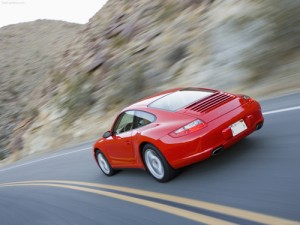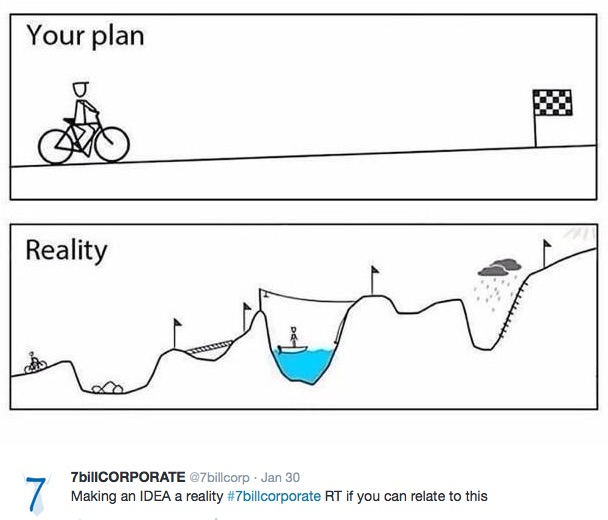A recent tweet by 7billCORPORATE (@7billcorp, part of @7billionideas) really nailed the truth about innovation and business. On 30 January 2015 via Twitter, a brilliant graphic was added to a post that contrasted the perception many people have about the path to progress and what it’s really like. Here ’tis:
So many think that innovation happens quickly, smoothly, without roadblocks or bumps. And that may be true, for a few. If you are operating in a business environment in which there is a reasonably clear — and straight — line to who your future customers will be and what products and services you need to develop for them, first count your blessings and then get on the accelerator. Assuming you have the technology and know-how to make it happen, these are precisely the conditions when speed is critically important. Start. Go fast. Keep going. Don’t stop.
In these rare moments in the world of enterprise, getting to your destination as fast and efficiently as possible must be your paramount goal. The business world has countless tools for planning and eking out process improvements for such journeys, and you probably already know how to use them well.
In such cases, think of the time you may have watched with envy that shiny red Porsche Carrera speeding off down the highway with the driver pushing “pedal to the metal”. Recall the roar of all that horsepower as it reached top speed and peak performance, unchallenged by anything or anyone on the road.
Unfortunately, such an analogy isn’t the reality for most firms. “The future” for most businesses and organisations I encounter will be the kind of path that 7billCORPORATE displays. There will be dips, rocks, wobbly bridges over unknown chasms and deep water where you expected smooth pavement. Oh, and don’t forget the thunderstorms.
For most of those I meet, their future operating environment is uncertain, ambiguous and even (heaven forbid) unknowable. During their journey in time, many of the time-tested tools and techniques at their disposal will prove to be, well, not very helpful.
That does not mean that what’s needed is a new car and a new driver. Think now of that same Porsche, only this time keeping in mind its other performance capacities, such as cornering, shifting, braking and speed. This exceptionally well-engineered automobile is both ready for the high-speed straightaway as well as the curves, redirections and sudden changes of speed required to drive the rocky road to tomorrow.
Yet, if you lack the mindset to power up and power past unpredictable obstacles, you might as well be on skateboard with only one set of wheels. You’re not going to move far, fast or fearlessly. Which is why, as I work with companies large and small, I find that what’s most needed is a new leadership mindset, skillset and toolset. Too many leaders have great cars, but they lack versatility. The 21st century leader must be able to move fast when he or she knows the right direction, be cautious when the terrain is unknown or threatening, be willing to change directions when new and compelling information becomes available, and be able to stop quickly — even altogether — should the conditions for progress prove impossible.
Becoming more versatile (or ambidextrous) as a leader is no small task; but, in my experience, it is now an imperative for survival, and even more an imperative for growth. Our Nextsensing Project is about working with the mindset of any leader facing an uncertain future. No matter what kind of car he or she drives, moving into the future requires an understanding of the unique challenge at hand, the identification of the appropriate tools to use for the situation, and the building of confidence that only rough roads truly test the abilities of the vehicle — and the driver.
Porsche image from http://www.porsche-mania.com

